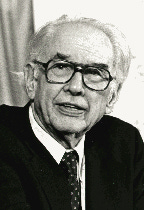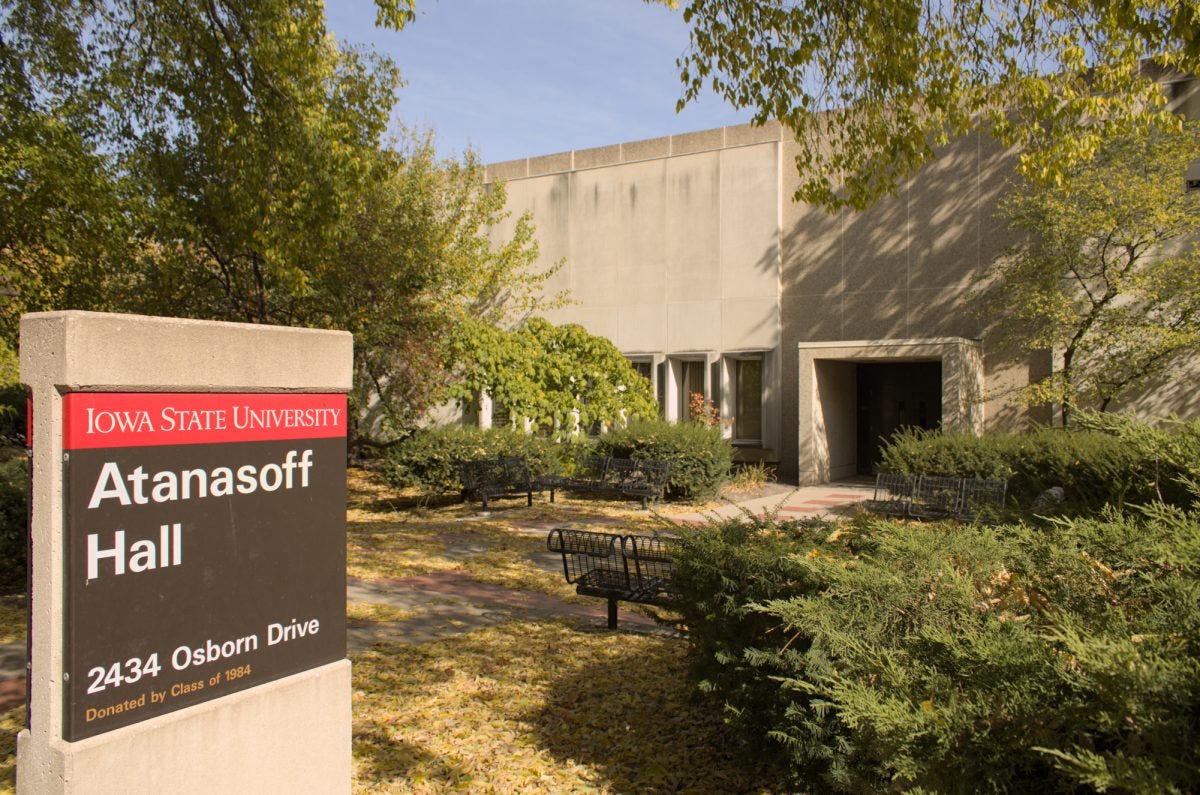This post is not a complete biography of an inventor as others have done a remarkable job documenting the genealogy with immigration lineage, educational background, family highlights, professional resume, national service and the end of life. It is also not a detailed discussion of the technologies invented, the methods used, competitive pressures, alternatives, successors, or challenges. It is also not a detailed discussion of the people who helped this inventor establish his place in history.
What it is, however, an exhortation to the State of Iowa for recognizing that one of the most influential technologies of the last century was created on one of its college campuses and let the world know through all means available.
I bristle at each sighting of a North Carolina license plate and the Wright Brothers’ Wright Flyer proudly embossed on the plate. I compare that to our standard plate which displays grain silos (invented in Illinois), barns (imported from Western Europe), corn (a product of Central and South America), and windmills (from Persia, present-day Iran).
Doesn’t Iowa have something that’s uniquely Iowan?
The above image is altered from the sign that welcomes travelers at Iowa’s borders on the major interstates. It hopes to acknowledge one of the most important inventions of the past century from Ames, at Iowa State College (now University, of course), and remembered only by a select few committees, a building, and websites.
This story was seeded in my brain a long time ago when I first read about the Atanasoff computer and remained dormant until Walter Isaacson dug into it in his book Innovators. Walter, of course, is the consummate storyteller of individuals whose work influences our very lives, from Benjamin Franklin, Steve Jobs, Leonardo da Vinci and Elon Musk to name just a few. Innovators covers genius through the ages.
I submitted the phrase, “Birthplace of the Computer”, to a naming competition organized by the state many moons ago for the welcome signs, but lost to “Fields of Opportunities”, a statement so generic that we must’ve adopted it to mirror our Iowa-nice humility.
The role of a computer
I choose to define a computer as a device that aids in computation. Hidden Figures, a popular 2016 movie, takes another approach, telling the true story of a group of women who deploy considerable skill and intelligence in solving mathematical functions necessary in achieving goals of the space program. They, too, are called computers.
I maintain the point of view that the first computer was invented at Iowa State College by John Vincent Atanasoff in 1930s. It successfully demonstrated its core function and provided significantly greater speed over the manual method. It was good enough for the idea to be stolen, patented by someone else, and a court to spend years adjudicating the patent and its subsequent overturn.
Critics argue that the Atanasoff computer lacked a stored-program architecture, meaning instructions had to be fed one at a time. Would the same critics take away Tim Berners-Lee’s creation of the world wide web by claiming that his invention didn’t put the world’s knowledge online?
The Inventor
John Vincent Atanasoff was born the son of a Bulgarian immigrant in 1903. The father, an engineer in a plant run by (the) Thomas Edison, played a key role in the boy’s early interest in advanced mathematics and engineering. The gift of a slide rule from his dad for helping wire their Florida home for electricity was instrumental in a young John replacing baseball with logarithms, leading him to master calculus during middle school, and complete high school requirements in two years.
He studied Electrical Engineering at the University of Florida, completing that degree with the highest GPA of his time. A fellowship enabled him to pursue master’s work in Physics and Math at ISU where he chose to stay despite admittance to Harvard. He left Ames to complete his doctoral work at University of Wisconsin, returning once again to Ames an assistant professor of physics in 1930.
A dreamer and thinker devoid of a peer group at ISU, he continued to wonder about past problems, specifically those complex and tedious calculations he’d encountered during his doctoral work. There had to be a better way than the desktop adding machine then at his disposal. He tinkered and postulated through 1937, once offering to IBM a way of modifying (would it be hacking today?) one of its tabulating machines to solve sets of linear equations. IBM demurred.
He understood the constraints presented by analog ways to accomplish the task at hand. Though his trusted slide rule and logarithms were fully capable of helping solve the computational problem, a digital solution was necessary to accomplish the task rapidly. He knew he needed multiple components to design the digital solution.
Parts of the Machine
A computer generally consists of the means of input and output, storage (memory), computation (processor/CPU), and the algorithms necessary to solve the problem.
He had a few options for memory represented by an electrical charge - condensers (capacitors), vacuum tubes, electromagnetic material, pins, and relays and chose condensers instead of the more expensive and faster vacuum tubes. They posted a constraint in that the charge was momentary in the condenser, a problem that would require high speeds and crossing the state line to solve.
Computation, on the other hand, was perfectly suited for vacuum tubes. Binary arithmetic was the basis for this computer and the on/off switch perfectly represented the 1/0 state.
Paper (more accurately, punch cards) provided the input and output mechanism, and the one most prone to breakdown. The computer was designed to solve linear equations iteratively, eliminating one variable with each step. The output from one step of the iteration, a set of simpler equations, would be printed on punch cards and become inputs to the next step. Though the process to eliminate tedium appears slow and tedious to us today, it was still 10x faster than the process Atanasoff had used in his doctoral work.
A wintry drive, bourbon and the eureka moment
Some find their inspiration in the shower and others on long nature walks. John was a car buff and, after a period of frustrating failures of design, got into his car and began driving to a state that didn’t have dry laws.
The eastern edge of Iowa is about 190 miles from Ames. On that cold winter night in 1937, he continued east at speeds approaching 100mph, finally stopping at a tavern in Illinois. There, over bourbon and soda cocktails and a server who reportedly left him alone, he found his solution. The descriptive manual for his invention, as documented by his graduate student assistant, Clifford Berry, is remarkable in its technical detail.
Perhaps Illinois should claim credit for the computer since John Vincent Atanasoff received his divine inspiration in a cocktail east of the Mississippi!
Problems & Solutions
The binary system used by the computer lent itself well to the condensers which held the electrical charge representing a 0 or 1. Electricity established the digital approach he instinctively knew to be necessary. Though the condensers could only hold their electrical charge briefly and were a single point of failure, the bourbon and soda helped him visualize a system of a rotating drum with a brush that refreshed the electrical charge in the condensers and another that allowed for the stored signal to be “read”.
He termed the rotating drum contraption a ‘memory jogger’.
There were problems with this computer - paper burned when punch cards were being produced, the mechanically jogged memory was considerably slower than the ‘faster’ vacuum tubes, and he was a solo guy without a peer group at ISU.
He had documented his design in 1939 and requested funding to further this prototype into a fully developed product. He concurrently sent his design to IP counsel retained by the College for patent protection. The funding request satisfied by the Iowa State College Research Council, he continued product development and completed the functional product in 1942 just as he was drafted into the Navy and left for Washington DC.
The patent was never filed by the Chicago-based IP counsel for the College.
The Intellectual Property heist
I have promised a ‘no tabloid styled storytelling’ in my thesis for this series and will refrain from details of the counsel’s failure to file a patent for Dr. Atanasoff’s invention at Iowa State and the subsequent lawsuit. Briefly, however, a house guest to John Atanasoff in 1941 developed, patented, and rested on laurels for inventing a computer until an infringement lawsuit and its result in 1973.
Readers interested in the lawsuit’s details should check out this summary at Atanasoff-Berry Computer Court Case.
Judge Larson’s 19-point opinion after more than five long-years of testimony is clear and direct. I can only imagine Dr. Atanasoff’s mood at this particular recognition:
Moving on…
Dr. Atanasoff must have been crushed to learn that his invention had been disassembled and likely trashed during one of his return visits to Ames in 1948. According to his biography published by the JVA Initiative Committee at Iowa State University (College became University in 1959), Dr. Atanasoff continued in his work for the US Government, first as Chief Scientist for the Army Field Forces, then the Director of Navy Fuse Program and the Naval Ordnance Laboratory. He made a move to entrepreneurship and corporate life in establishing the Ordnance Engineering Corporation which was sold to Aerojet General Corporation. He remained at the company until his retirement in 1961.
Final Thoughts
A lengthy patent infringement trial, a clear opinion, and a series of articles and reports have established the provenance of the invention of the century, its continued importance to our world today, the continued efforts by Iowa State University to remember, maintain, celebrate, and recognize Dr. Atanasoff’s lonely work.
It is time we celebrate his invention louder than a website or in a building name.
Sources
JVA Website. https://jva.cs.iastate.edu/. Retrieved June 5, 2025
Computer Timeline - John Atanasoff. https://www.computer-timeline.com/timeline/john-atanasoff/. Retrieved June 8, 2025
Innovators
Isaacson, W. (2014). Innovators (pp. 54-62). Simon & Schuster.










I could not agree more with your proposal to add this to our state motto and to broadcast this major Iowa-based accomplishment proudly. I have never understood why neither Iowa State or the state of Iowa has made a bigger deal out of Anastasoff’s important pioneering work. Thank you for sharing this.
Thanks for this fascinating report!